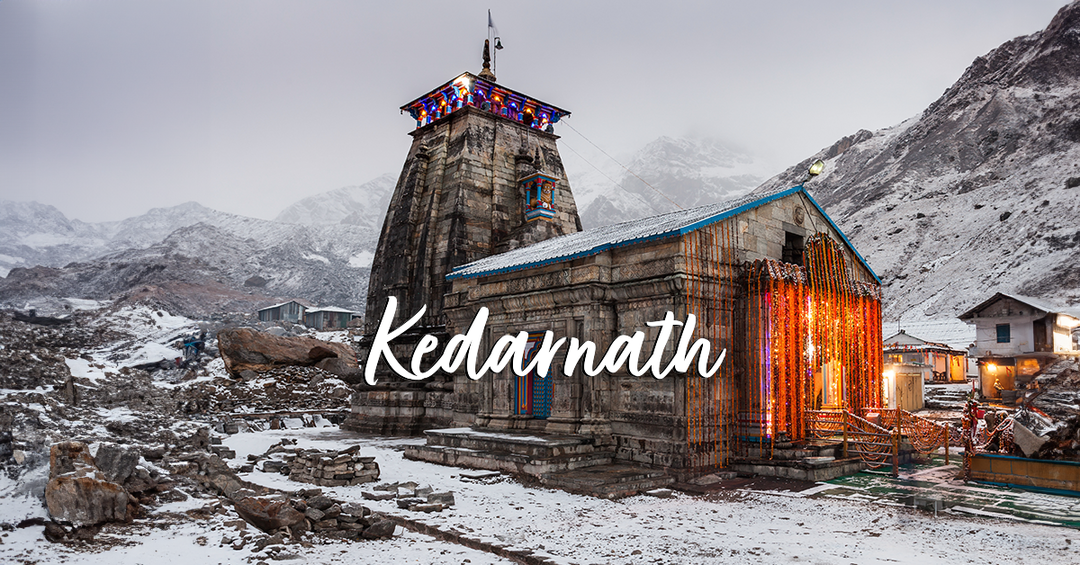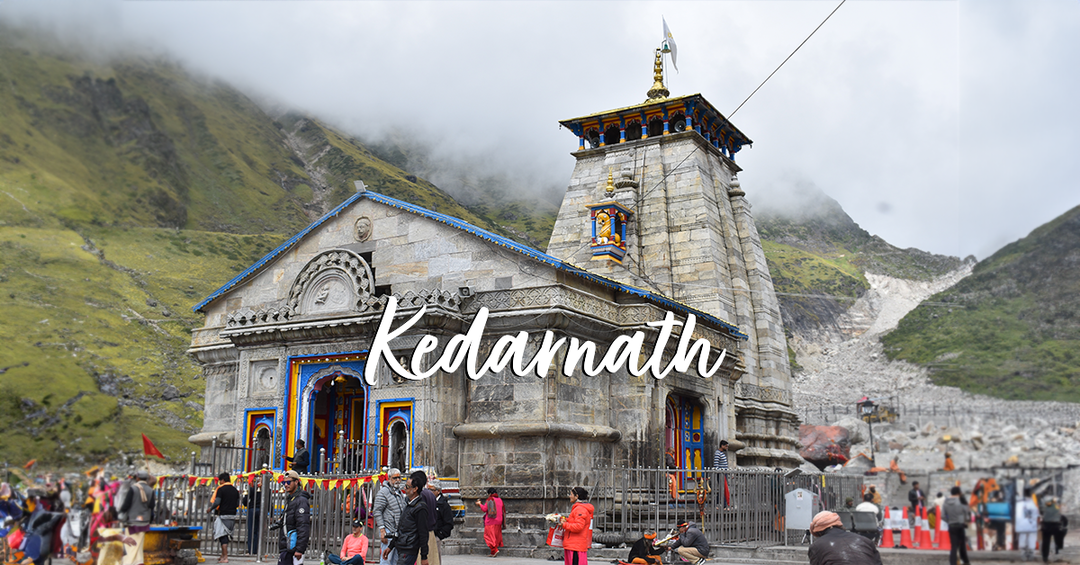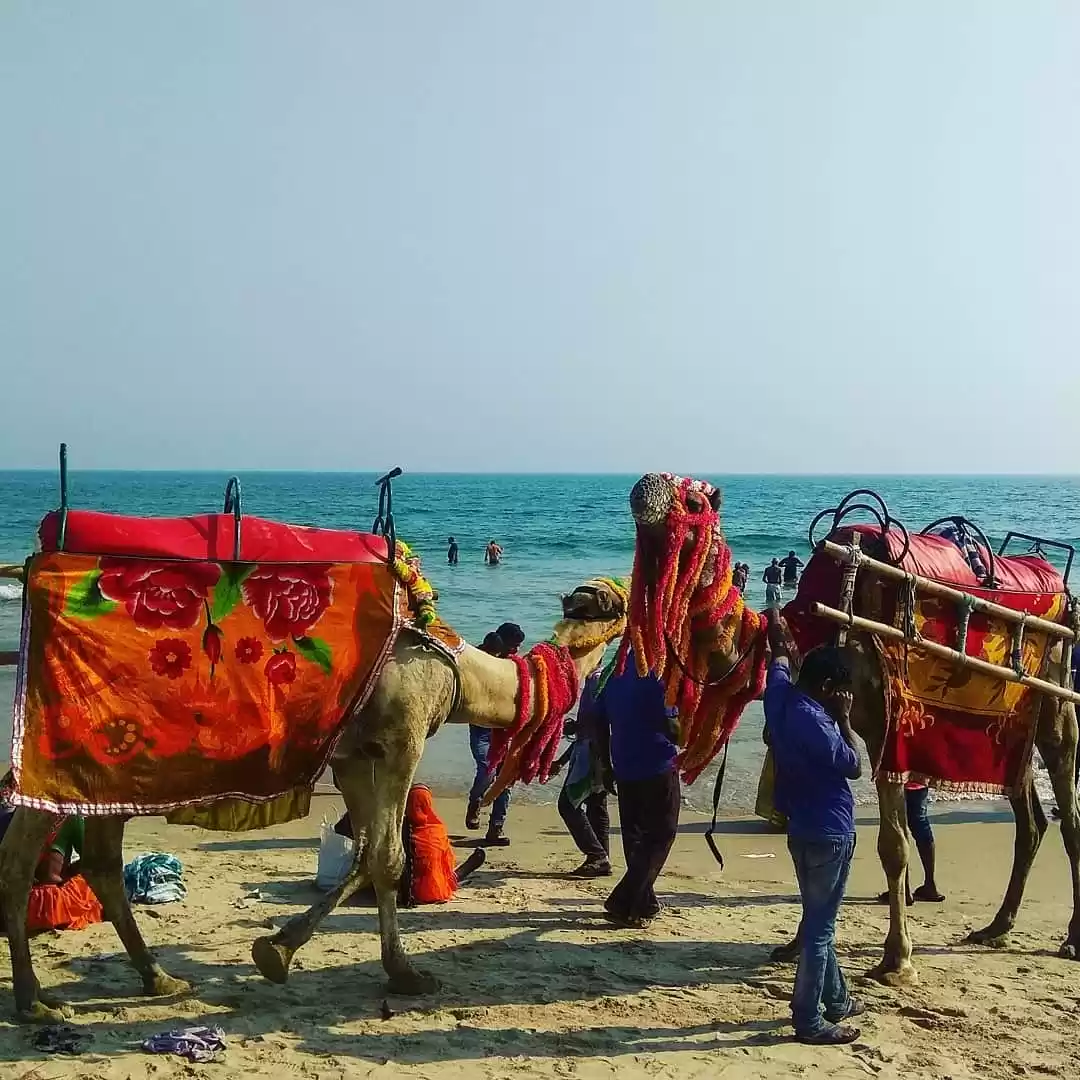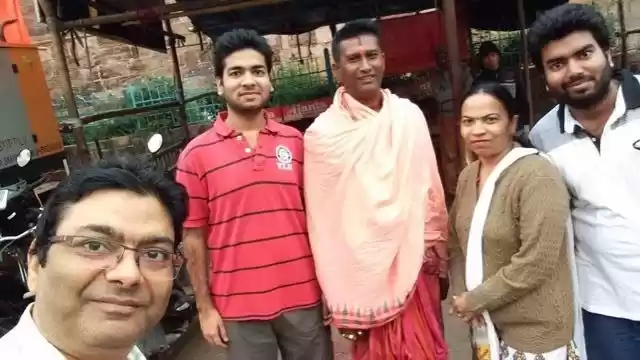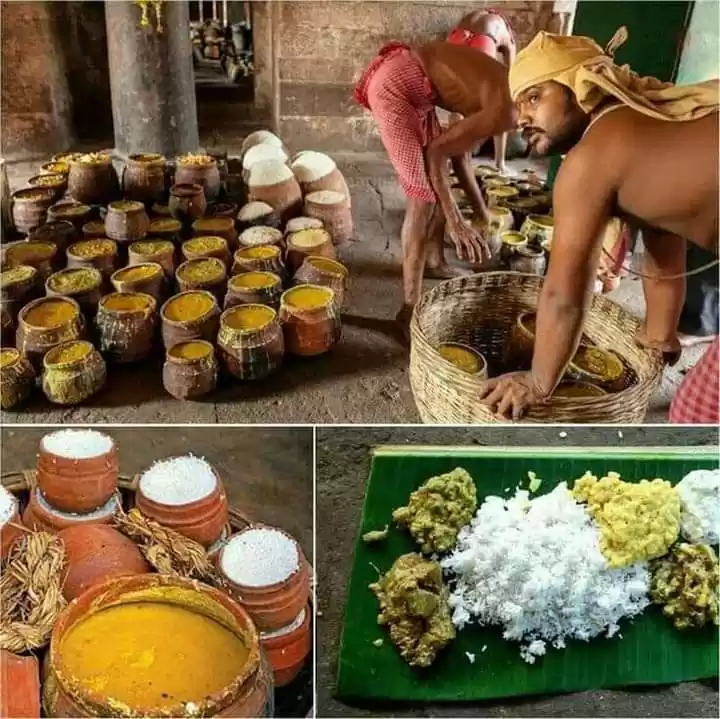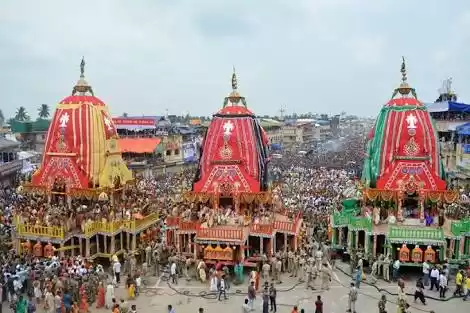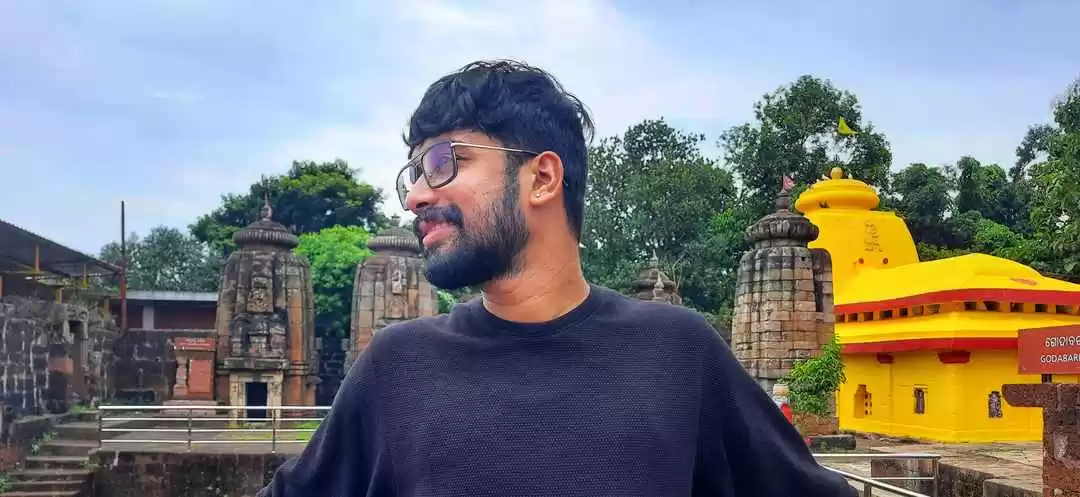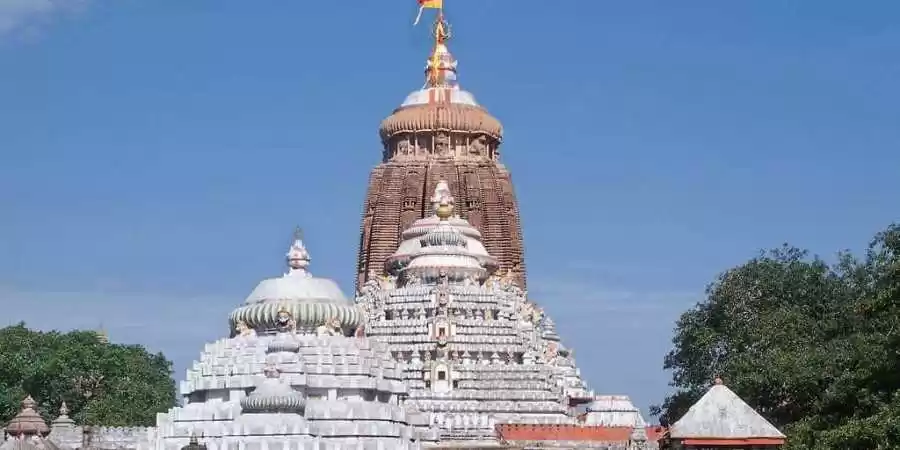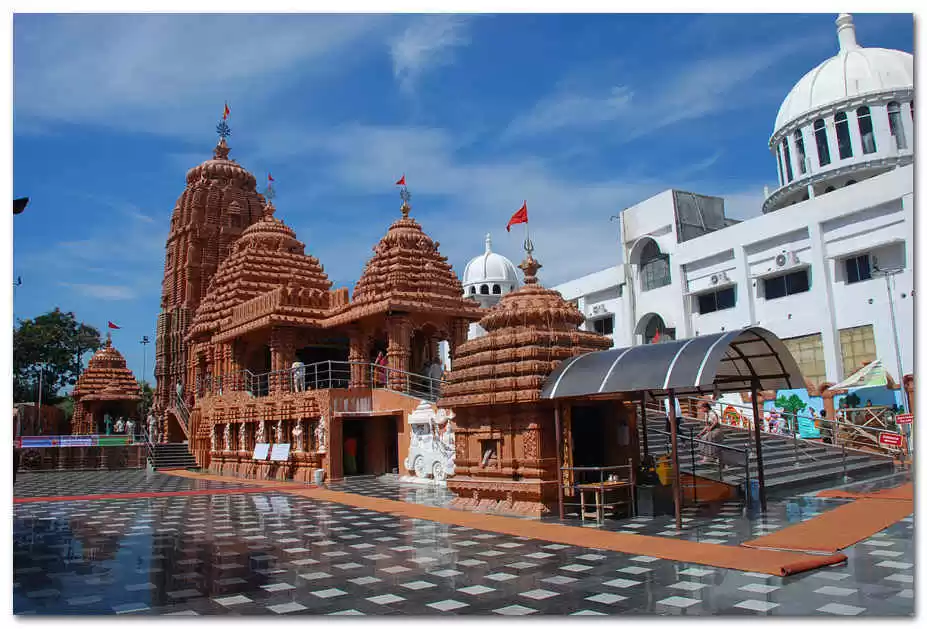The highlight of the The Jagannath Temple in Puri is the Mega Kitchen here. The temple has been a fundamental place of worship in Hindu culture. The Char Dham (meaning: four abodes) is a set of four shrines in India associated with Lord Vishnu. The shrines are, Badrinath Dham in the North, Rameshwaram in the South, Dwarka in the West and Puri in the East. I had the good fortune of visiting the Jagannath Temple of Puri in March 2021. The weather (and the covid-19 situation) seemed to be favorable for our travel!
Today, on the auspicious occasion of Snan-Yatra (the bathing ritual of the Gods of the temple), I remember my exploration of the World’s Largest Satvik Kitchen - the Mega Kitchen of Jagannath Temple, Puri.
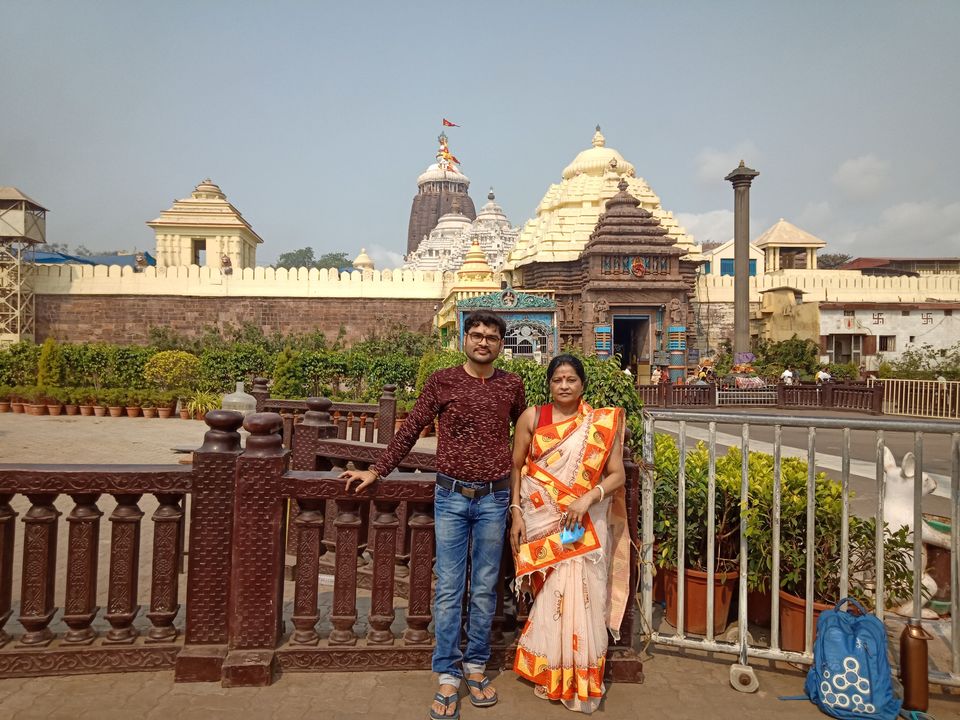
The legend of Puri Dham
Jagannath Temple in Puri houses the trinity of deities - Mahaprabhu Jagannath (literally translating to Lord of the Universe), His elder brother Balabhadra and sister, Devi Subhadra. King Indradyumna had built a magnificent temple dedicated to Lord Vishnu. The deity was crafted as per instructions received by the king in his sleep. Unlike stone and metal icons found in most Hindu temples, the image of Jagannath is made on a log of a fragrant tree that had come floating to the seashore. The huge Jagannath Temple in Puri covers an area of over 400,000 square feet and it is surrounded by a high fortified wall. With its sculptural richness and distinct Oriya style of temple architecture, Jagannath Temple in Puri is one of the most magnificent monuments of Eastern India. The temple has four entrances, each named after the sculpture of animal guarding the gates - Haathidwar (Elephant-gate) to the North, Ghodadwar (Horse-gate) to the South, Baaghdwar (Tiger-gate) towards the West and Singhdwar (Lion-gate) facing the East. The Lion-gate is the main entrance to the temple which opens onto the Grand Road. Puri is famous for its annual Ratha yatra, or chariot festival. The three principal deities are pulled on huge and elaborately decorated temple cars along this Grand Road. The Jagannath triad travel 3km to the Gundicha Temple while allowing millions of devotees assembled on both sides of the road to have a holy view of the Lord outside His temple. The English term “Juggernaut” derives itself from this event.

Chhappan-Bhog
Legend linking the four pilgrimage spots is that Lord Vishnu takes his bath at Rameshwaram, meditates at Badrinath, sleeps in Dwarka and visits Puri to have his meals. Food is thus a crucial aspect of the Jagannath Temple in Puri and the kitchen is a pivotal part of the premise. About 1,000 cooks prepare 56 different kinds of offerings — called Chhappan (meaning 56 in Hindi) Bhog — to serve to the Gods, six times a day. Mythology states that villagers of Gokul had taken refuge from the wrath of the rain-god (Indra) under the Govardhan Parvat that Krishna held on his little finger. After Indra relented and normal life resumed, the villagers decided to feed young Krishna out of their devotion. Since Krishna used to eat eight times a day, the people prepared for him fifty-six dishes to compensate for all the meals that he had missed in the seven preceding days. Hence God is served with 56 food items in the Jagannath Temple in Puri. The kitchen is vast, spread over an acre. It is believed that cooking in the temple kitchens is supervised by the Goddess Mahalakshmi herself. She is the empress of Srimandir and consort of Lord Vishnu. All food is cooked following protocols prescribed by Hindu religious texts. The food is cooked with indigenous vegetables – they are cooked without onions, garlic or tomatoes, potatoes and chilies.
Daily offerings to the Lord include:
• Gopala Vallabha Bhoga – breakfast
• Sakal Dhupa – served around 10am
• Bhog Mandapa Bhog – served in the Bhog Mandap
• Madhyanha dhupa – lunch
• Sandhya Dhupa – served at around 8pm
• Bada Simhara Bhog – served around 11 in the night
Rosaghora
Priests at the temple double up as guides here. Our priest, Mr. Suman, showed us around the mega-kitchen which is known as Rosaghora. When we visited, we saw the junior cooks, who are not allowed to enter the main kitchen, engaged in various tasks in the courtyard around the grand kitchen. We found godown of grocery items being managed like shops. Few staff were preparing the spices brought from the godowns. Few fetched water from two special wells named Ganga and Yamuna. Few were cleaning and preparing the pots. While the rest of them were busy grating coconuts, chopping piles of vegetables, stuffing them all into the earthen pots and carrying them to the kitchen.
Inside the kitchen, 500 cooks prepare the food in the multiple chambers housing mud-and-brick ovens (called chulha) lit with charcoal and wood. Cooking is done on earthen pots which are stacked on top of each other in groups of seven. Heat is curiously distributed upto the top of the stack evenly, so that food is prepared simultaneously. With no stirring or mixing of gravy, this is slow-cooking at its best. While no outsider is allowed into the kitchen, we could catch a glimpse of the flames and the stacks of pots inside through air exhaust gaps in the walls.
Mahaprasad
Offering the food to the deities involves a dance-like routine. The muscular, bare chested cooks carry a long bamboo pole with two rope baskets at either end. Once the food is cooked, they place two or three pots inside the basket and balance the bamboo pole on their shoulder. They walk from the kitchen to the sanctum. The men act like parts of an assembly line – relentless and all in perfect sync. The food after being offered to Jagannath, is served to Bimala Devi. The food then becomes Mahaprasad (divine offering) which is made available in an open market. Ananda Bazar, located to the North-east of the Singhadwara inside the Temple complex is a place where devotees queue up to buy in portions.
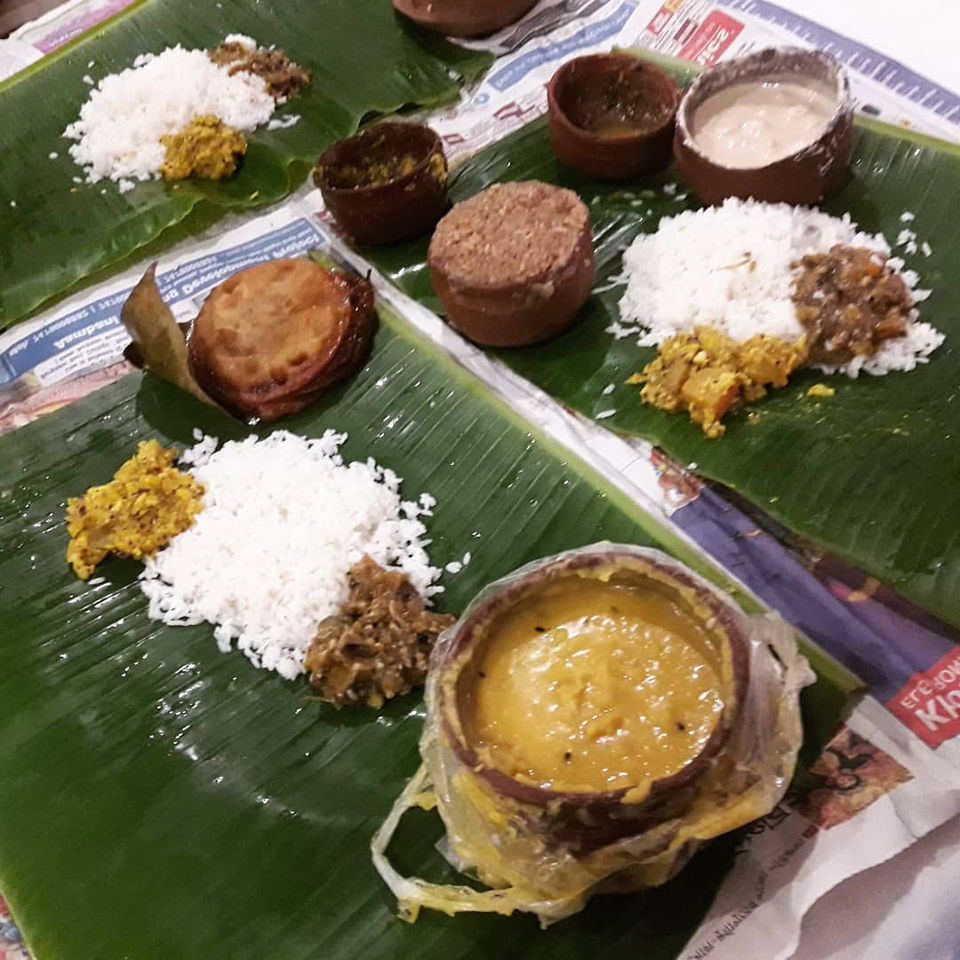
Traditionally, Mahaprasad is laid on banana leaves and devotees are supposed to sit on the ground while having the food. Pilgrims may have the Prasad in the Ananda-Bazar area. Otherwise few priests provide the service of delivering packets of Mahaprasad to hotels at the behest of pilgrims. The dishes are fairly standard: a variety of rice dishes – khichdi / ghee-rice / kanika (sweet rice), different vegetable curries (dalma, mahura, etc), Dal made with different local lentils, and a number of sweet dishes like malpua and kheer. The Jagannath temple in Puri is the largest vegetarian, satvic kitchen in the world — one that miraculously serves any number of pilgrims on all days of the year. The Maharasad is holy and the experience of savoring the food was truly gratifying and divine for us that day!
My experience in the Jagannath Temple in Puri has been published at https://travelogueofkuntala.com/astounding-facts-about-jagannath-temple-in-puri-india/








